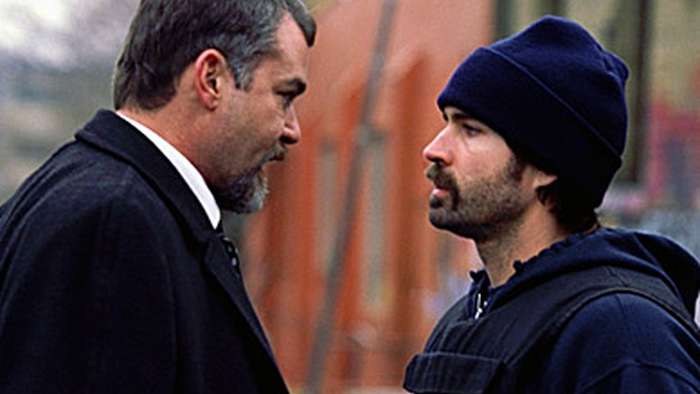"There are things known and there are things unknown, and in between are the doors of perception.”
- Aldous Huxley
The definition of a sequel or prequel is basically concrete. At times, sequels or prequels would be better off as an individual, unique piece free of association to another property. Films sometimes struggle when writers have to force elements of the related film in order to maintain “prequel” or “sequel” designation. There are instances of accidental sequels or prequels that have occurred in film. Narc is a 2002 film starring Jason Patric and Ray Liotta that could accompany 1991’s Rush as an unofficial sequel. (Briefly: Rush is based on a book by Kim Wozencraft, which details her real life experiences as narcotics officer.) I am a fan of connections based on a principle or a single element, but what makes this connection easier to explore are the surface similarities (the job of a narcotics officer, the personal toll of the job, and finally Jason Patric portraying a narcotics officer in each film).
The driving force in Narc is the feeling of arduous, taxing pursuit. Patric’s character, a cop named Nick Tellis, wants a desk job within the police department. He wants to provide for his family while coping with intense personal struggle from an incident earlier in the film. He takes on a case that the department and city officials struggle to handle. During his investigation, his character’s drive towards understanding the details of this particular case intensifies. His focus shifts and it opens up his character’s struggles with the job, his home life, and his ultimate goal.
Enter Ray Liotta.
Liotta’s character embodies everything that occurs within the story and serves, thematically, as the “reflection in the mirror” throughout the movie. The character’s name alone, Henry Oak, echoes the heavy role of the character and his introduction resonates. His signature on a stack of reports weighs heavily in Tellis’ grasp as he tries to piece together the details of the case. Tellis seeks out Oak and from there they make their way into the depths of investigative work.

Each character’s plight weighs very heavily in Narc and each member of the supporting cast has a tie to the central story. The drug use is intense and up front which may make some viewers uncomfortable and the harsh movements give the film a very distinct, tense feel, though never nauseating or indiscernible. The movements are not very musical but more free form and adventurous. There is a handheld, or documentary, feel at times. In addition to an uncalculated feel, Cliff Martinez’s score is simple and serves as a wonderful supplement tailored to each scene. And though it is often a subtle inclusion, the score serves its theatrical obligations.
Narc succeeds in presenting a story that stays within the frame. It does not stray from what the writers intended it to be, and it keeps the viewers engaged. As Tellis and Oak make their way towards the finale, the viewer is with them every step of the way. "Narc" maintains a story that is easy to follow and explores the characters very thoroughly. Narc feels like a loose sequel or prequel that opens the door to a lot of hypotheticals in relation to Jason Patric's character in Rush. It requires a bit of imagination but this supposed relationship between the two films is something that makes the world of cinema exciting!
When you have bad sequels to good movies, one develops an appreciation for incidental occurrences of connections in films or stories. The idea of a sequel breaks away from convention when one allows imagination to burst into their world of perception. Another example: Gross Pointe Blank can uniquely be viewed as a sequel to Say Anything. The uneven ending of Say Anything absolutely gives way to the end of Lloyd Dobler and the creation of Martin Blank. Obviously any connection between these films is only imagined, not intentional. Imagination wields a mighty sword. Why stop at The End?








